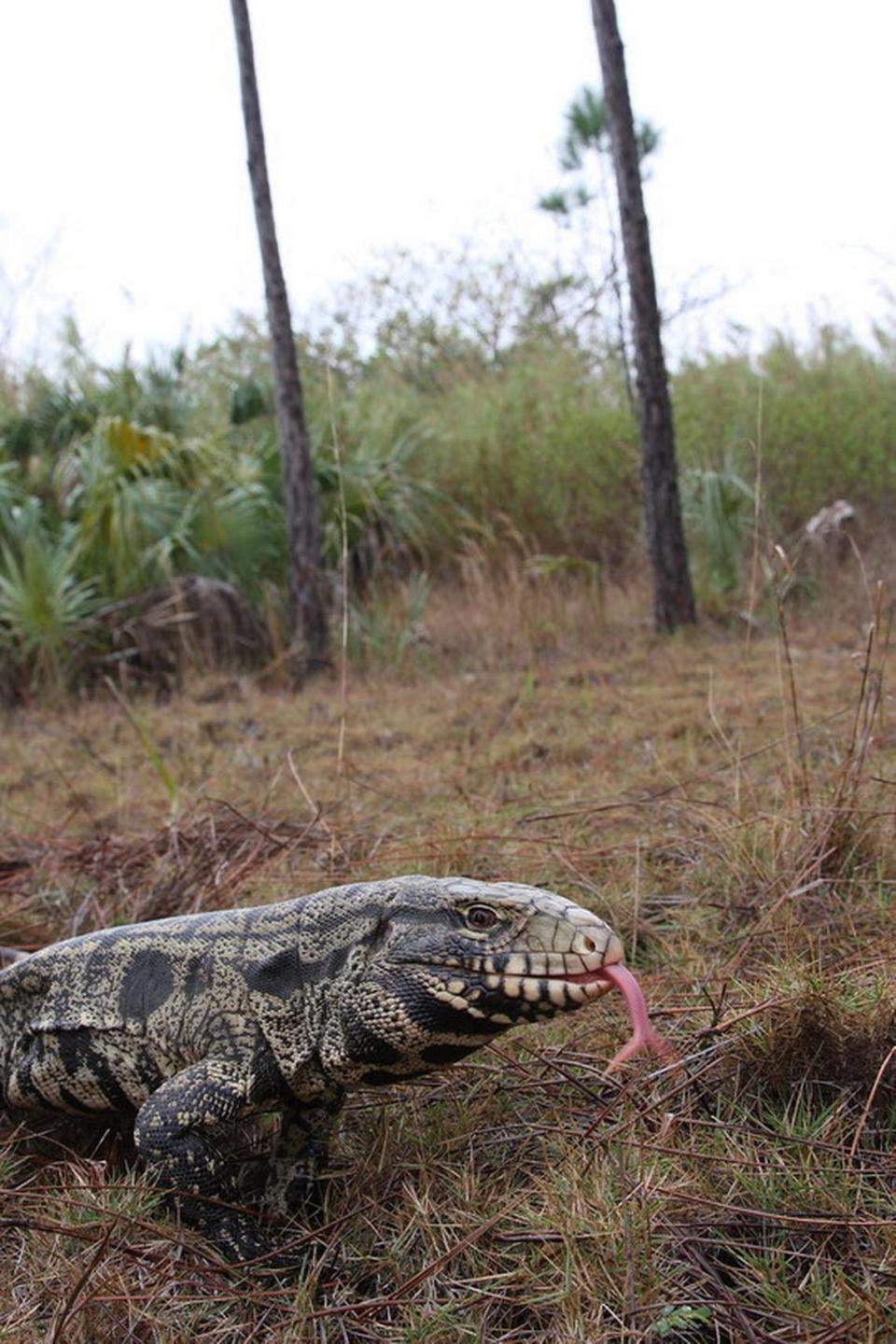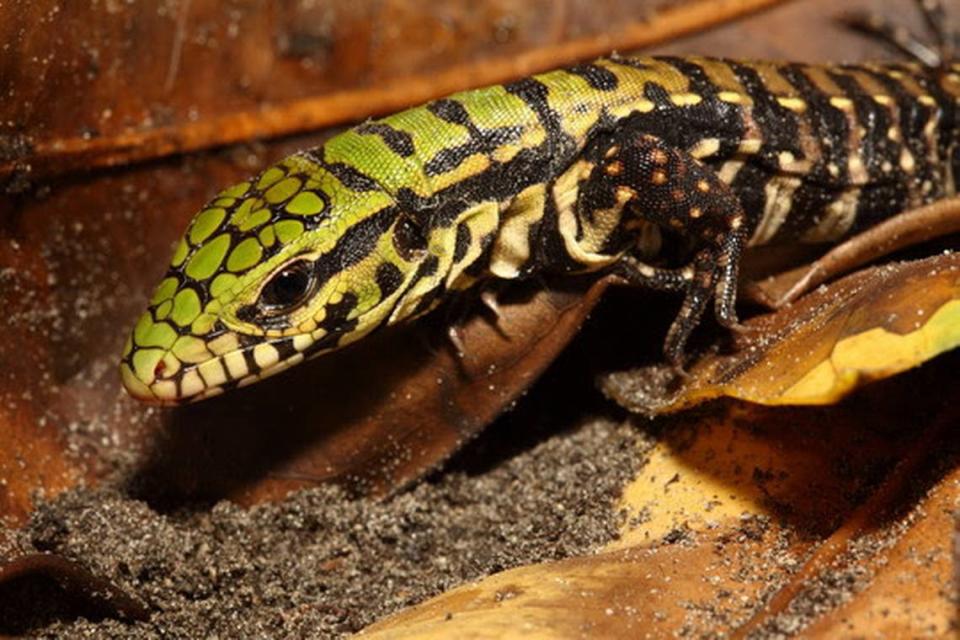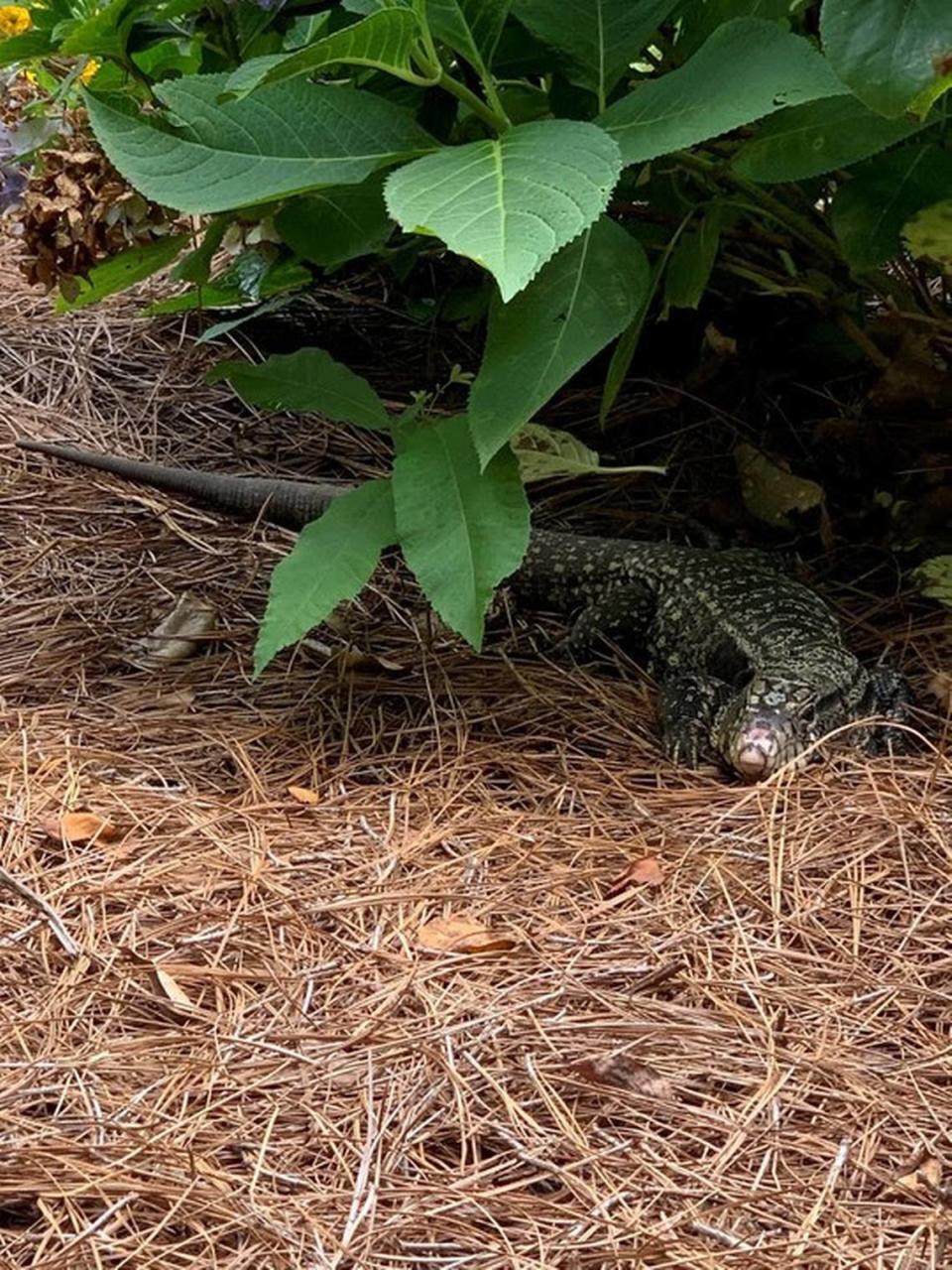Invasive lizards spotted in the Midlands could soon be outlawed in SC, officials say
Concerned about the increased sightings of an invasive lizard species across the state, with most occurring in the Midlands, the South Carolina Department of Natural Resources is taking action to stop the spread of the Argentine black and white tegu lizard.
On Thursday, DNR unanimously approved nonnative wildlife regulations that will end the possession, sale, import and breeding of the tegu lizard, officials said in a news release.
“It’s reassuring to see South Carolina taking these bold steps to protect its native wildlife from this highly invasive lizard,” Center for Biological Diversity attorney Elise Bennett said in the release. “Tegus and other nonnative reptiles are already wreaking havoc on Florida’s ecosystems in large part because of the unchecked commercial trade in these animals. South Carolina’s new rule attacks the problem at its source.”
The next step for the tegu rule will be sending it to the General Assembly for finalization, according to the release.

“It is important that this species does not establish in our state,” state herpetologist Andrew Grosse said in September 2020, after nine sightings of the lizards had been confirmed in South Carolina.
Six of the sightings were from Richland County and Lexington County, where the first documented case of the tegu lizard was reported on Aug. 21, DNR officials said. Two of the sightings were in the Lowcountry in Berkeley County, while the other confirmed report was in the Upstate in Greenville County, according to DNR.
Black and white tegu lizards are native to South America and are thought to have arrived in the southeastern U.S. via wildlife trading. The tegus are predators and can rapidly multiply — laying 35 eggs per year, according to the Georgia Department of Natural Resources.
Black and white tegus, which are the largest tegu species, can grow up to 4 feet long and weigh up to 10 pounds and have a life span of about 20 years, according wildlife officials. They are omnivores and eat plants as well as various types of eggs, pet food, small mammals, insects, reptiles, amphibians and birds, DNR said.
Already established in Georgia and Florida, the tegus could have an effect in South Carolina on native ground-nesting birds like turkey and quail, as well as other species like the state-endangered gopher tortoise, given the lizards’ preference for eggs, DNR said.
“The introduction of any non-native species can have serious negative impacts on native wildlife. Black and white tegus are no exception,” Grosse said in August. “Tegus mature and reproduce quickly.”

People currently possessing tegus will be allowed to keep them — as long as they fulfill certain requirements.
Owners must register and chip the lizards within 120 days of the rule becoming final, which is expected to happen in May, according to Bennett. During that 120-day span, tegus may be bought, sold or transferred but may not be bred, imported or released in the state, according to the release.
Next week, Florida wildlife officials are expected to adopt invasive species rules that will prohibit ownership of tegus as pets but continue to allow commercial operations to breed and export them through 2024. Bennett said this rule creates the potential for a flood of the lizards to be sent to surrounding states, including South Carolina.
“South Carolina is adopting this rule just in the nick of time,” said Bennett. “With Florida cracking down on ownership of invasive tegus to protect its own native wildlife, commercial markets are likely to shift to nearby states with the weakest laws, putting those states’ wildlife at risk.”

As adults, tegus have gray, black and white coloring on their scales, while young tegus have a bright green color on their upper torsos and heads. Because they are an invasive species, tegus are not protected by South Carolina wildlife laws or regulations and “should be removed from the wild,” DNR said.
“Although not considered aggressive toward people, tegus will defend themselves if threatened. They can react fast and lash with their tails. They have sharp teeth and claws and strong jaws,” says the Georgia DNR website dedicated to tegus.
After the first confirmed tegu sighting in Lexington County, an adult female that was about 2.5 feet long, more than 80 reports of the lizards in South Carolina were sent to DNR.
Prior to the first confirmed sighting, DNR said it received reports of the lizards being spotted in Lexington and Aiken counties for months.
Tegu sightings should be reported to DNR at grossea@dnr.sc.gov. If possible, DNR asks that reports include a photo, location, and time and date the lizard was seen.
